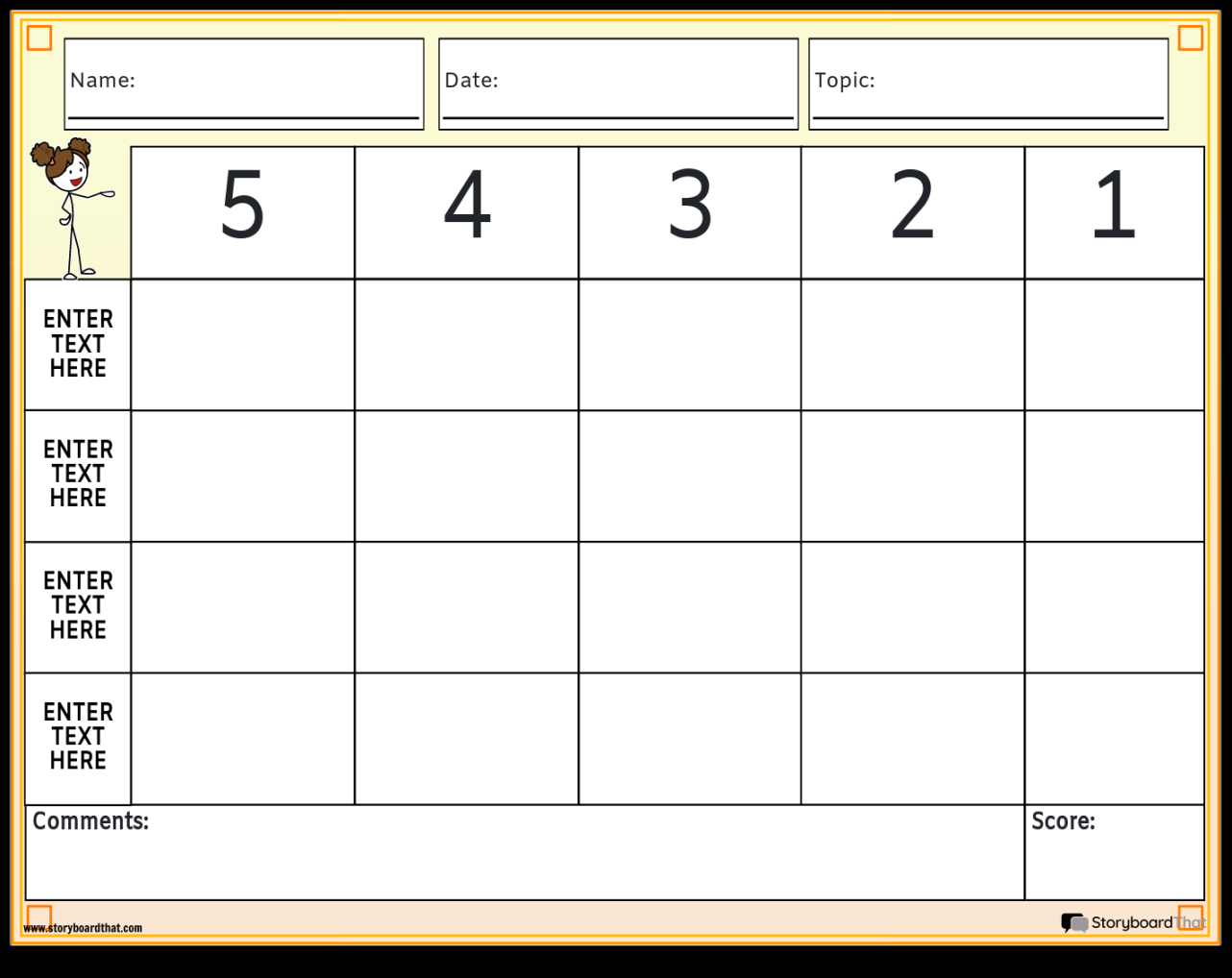A blank rubric template serves as a versatile tool for evaluating performance, knowledge, or skills across various academic and professional contexts. By providing a structured framework, it ensures consistency and fairness in assessment processes. This guide will delve into the essential elements and design considerations that contribute to a professional and effective blank rubric template.
Essential Components of a Blank Rubric Template

1. Clear and Concise Title: The title should accurately reflect the purpose of the rubric and be easily understood by all stakeholders.
2. Criteria: The criteria section outlines the specific aspects or dimensions that will be evaluated. These should be clearly defined and measurable to ensure objective assessment.
3. Performance Levels: The performance levels section establishes the different levels of achievement or proficiency that students or participants can attain. Each level should be accompanied by a descriptive explanation to clarify expectations.
4. Scoring Scale: The scoring scale specifies the numerical or qualitative values that will be assigned to each performance level. A commonly used scale is a 4-point scale (Excellent, Good, Satisfactory, Needs Improvement), but other options are available depending on the assessment requirements.
5. Weighting: If certain criteria are deemed more important than others, weighting can be applied to reflect their relative significance in the overall evaluation.
6. Comments Section: A comments section provides space for additional feedback or observations beyond the numerical or qualitative scores. This can be valuable for offering constructive criticism and suggestions for improvement.
Design Considerations for a Professional Blank Rubric Template
1. Layout and Organization: A well-organized layout enhances readability and clarity. Consider using headings, subheadings, and bullet points to structure the information effectively. Maintain consistent spacing and alignment throughout the template.
2. Font Selection: Choose fonts that are professional, legible, and easy on the eyes. Avoid using excessive fonts or decorative styles that can detract from the overall professionalism.
3. Color Scheme: Select a color scheme that is visually appealing and complements the overall tone of the rubric. Use colors sparingly and ensure they are accessible to individuals with color vision deficiencies.
4. Branding and Consistency: If the rubric is associated with a specific organization or institution, incorporate branding elements such as logos, colors, and fonts to maintain consistency with other materials.
5. Accessibility: Ensure that the rubric is accessible to individuals with disabilities. Use appropriate headings, alt text for images, and sufficient contrast between text and background colors.
6. White Space: Incorporate white space to improve readability and prevent the template from appearing cluttered. This can be achieved by using appropriate margins, spacing between lines, and consistent padding around elements.
Tailoring the Blank Rubric Template to Specific Needs
The blank rubric template can be customized to suit various assessment purposes. Consider the following factors when tailoring the template:
Subject Matter: The criteria and performance levels should be aligned with the specific subject or topic being evaluated.
By carefully considering these design elements and tailoring the blank rubric template to specific needs, you can create a professional and effective tool for assessing performance, knowledge, and skills. A well-designed rubric not only ensures fair and consistent evaluation but also provides valuable feedback for improvement.